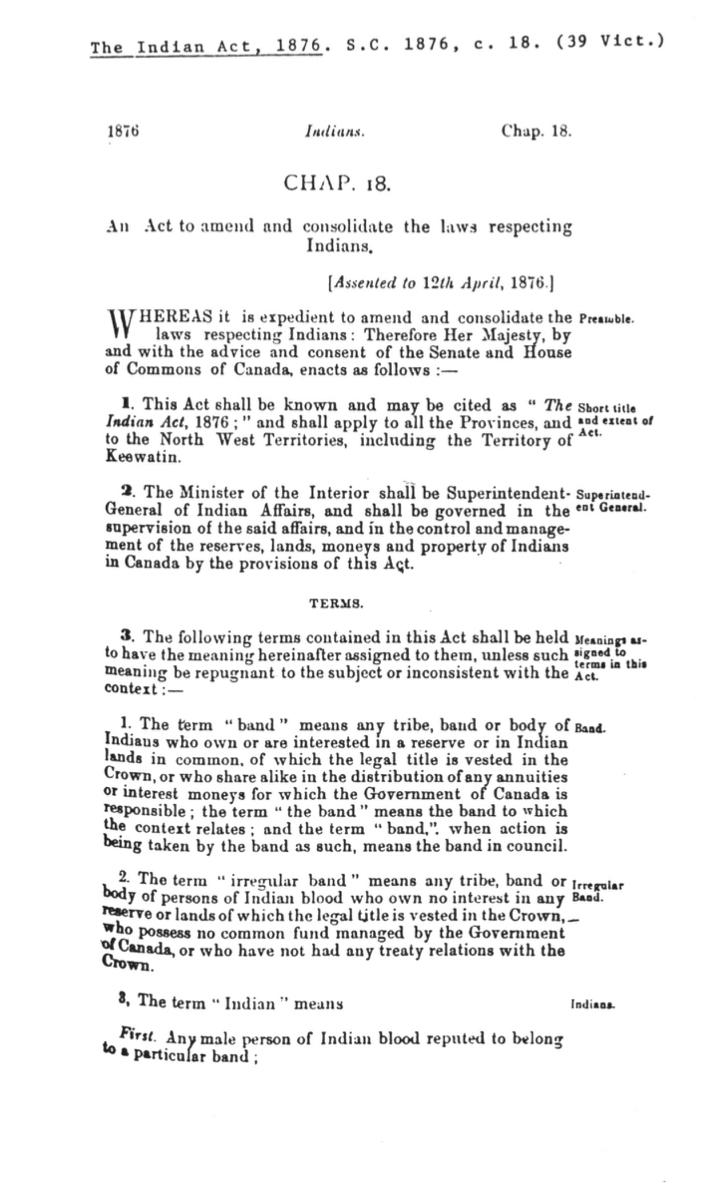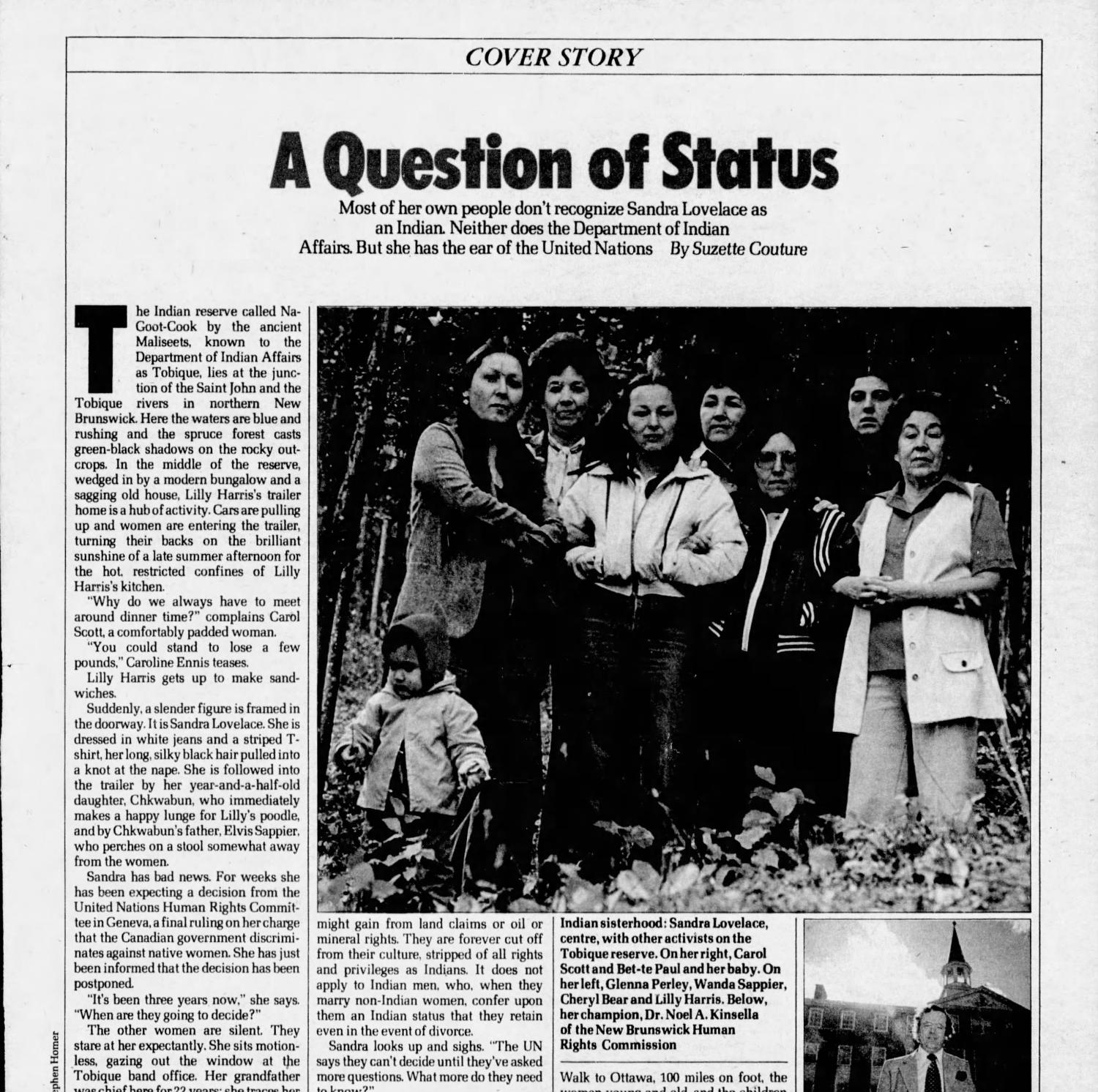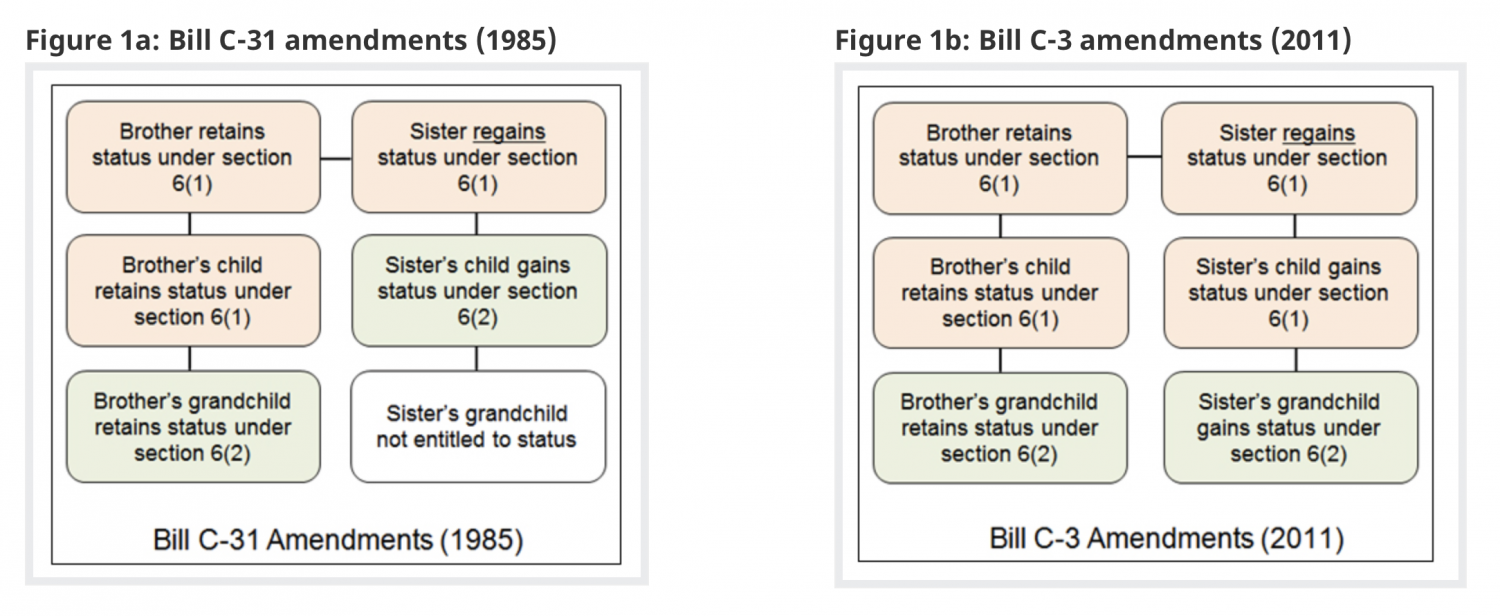Women Reclaim Indian Status
Indian status restored for many Indigenous women in Bill C-31
Date: 1985
In early 1985, Indigenous women in British Columbia had their sights set on the federal government. After decades of activism and organization — spearheaded by groups like the B.C. Indian Homemakers’ Association (BCIHA) — the government would finally revisit the thorny issue of gender equality in the Indian Act, which was first introduced nearly a century before.
One purpose of the Indian Act was to determine who among Indigenous people qualified as “Indian” in the eyes of the federal government. Of course, the different First Nations across what is now Canada already had their own ways of determining membership, but these were summarily ignored in favour of a streamlined, patrilineal system that could be understood and implemented by a non-Indigenous colonial government. Without any consultation, Canada unilaterally imposed this new system on all First Nations.
As laid out in Section 6, "Indian" status was recognized for men born in accepted bands, their children, and anyone they married, regardless of their ancestry. A man could lose Indian status in several ways, from attending university to becoming a doctor or lawyer to serving in the armed forces. Status was even more tenuous for women, who could lose it upon marrying a non-status Indigenous man. This loss of Indian status, a process called “enfranchisement,” was a feature — not a bug — as far as the government was concerned. But for those who experienced it, enfranchisement often meant more than a simple change of legal designation. On top of relinquishing specific rights as so-called “Indians,” those enfranchised — and their children — would often lose precious connection to their communities as they were no longer legally allowed to live on reserves.
A hundred years later, things would begin to change. It was a new era, one defined by heightened Indigenous politicization. First Nations women, in particular, were eager to fight what they viewed as discriminatory legislation. In 1977, Sandra Lovelace, a Maliseet woman from New Brunswick, petitioned the United Nations Human Rights Committee (UNHRC) to examine the language of the Indian Act. Ultimately, the committee determined the policy was indeed sexually discriminatory, and Canada was embarrassed on a global stage. It was enough to motivate Canadian lawmakers to amend the act, which they did in 1985 with Bill C-31. The amendment ended the longstanding gender discrimination, gave bands autonomy in determining membership, and allowed those who had been enfranchised to reclaim their status. It was now impossible for status “Indians” to lose their status.
And yet, hurdles remained. To reinstate status, for instance, a woman would have to physically travel to a Department of Indian Affairs and Northern Development (DIAND) office, which meant a long journey for those living in remote Indigenous communities. This essentially excluded those on the financial margins for whom the trip could prove a pricey endeavour. And the newly-reinstated members of bands now had access to the band’s resources, which at times were already stretched thin. Despite these shortcomings, requests for reinstatement of status flooded the government’s systems, resulting in longer than expected processing times.
The new policy also resulted in a hierarchical system of status. While women could no longer lose status because of their partner, such a guarantee couldn’t be extended to their children. A new Section 6 created a convoluted set of rules. To determine status, one now needed to examine generations of family history and intermarriages between those with status and those without.
Other women have since followed in the footsteps of Lovelace and the women of the BCIHA. In 2006, a Thompson woman named Sharon McIvor began a lawsuit concerning the generational transmission of status. The landmark McIvor v. Canada case led to further amendments of the Indian Act, involving the generational transmission of Indian status. Thanks to the McIvor Case and additional reforms, somewhere between 270,000 and 450,000 more people became eligible to register as status “Indians.”
However, activists say residual gender discrimination, rooted in a century of inequitable policy, persists. Women like McIvor, Lovelace and others continue to fight for greater equality for Indigenous women.
Sources:
- "Bill C-31." The Canadian Encyclopedia, 12 May 2020, https://www.thecanadianencyclopedia.ca/en/article/bill-c-31.
- ---. Indigenous Foundations, 2009, https://indigenousfoundations.arts.ubc.ca/bill_c-31/.
- Brake, Justin. "First Nations Women Finally to Be Treated Equally under Indian Act: Bennett." APTN News, 16 Aug. 2019, https://www.aptnnews.ca/national-news/first-nations-women-finally-to-be-treated-equally-under-indian-act-bennett/.
- Crey, Karmen, and Erin Hanson. "Indian Status." Indigenous Foundations, 2009, https://indigenousfoundations.arts.ubc.ca/indian_status/.
- Gehl, Lynn. "Lynn Gehl on Sex Discrimination in the Indian Act - Canadian Women’s Foundation." Canadian Women’s Foundation, 6 Nov. 2017, https://canadianwomen.org/blog/lynn-gehl-sex-discrimination-indian-act/.
- Hurley, Mary C., and Tonina Simeone. Legislative Summary of Bill C-3: Gender Equity in Indian Registration Act. Legislative Summary, 40-3-C3-E, Parliament of Canada, 18 Mar. 2010, https://lop.parl.ca/sites/PublicWebsite/default/en_CA/ResearchPublications/LegislativeSummaries/403C3E.
- Joseph, Bob. "Indian Act and Women’s Status Discrimination via Bill C31 and Bill C3." Indigenous Corporate Training, 9 July 2012, https://www.ictinc.ca/indian-act-and-womens-status-discrimination-via-bill-c-31-bill-c-3.
- "The Government of Canada’s Response to the Descheneaux Decision." Government of Canada, 31 Jan. 2018, https://www.sac-isc.gc.ca/eng/1467227680166/1572460465418.
- Thistle, Jesse. "Women and the Indian Act." History Performs, 5 Apr. 2016, https://performingindigeneityblog.wordpress.com/2016/04/05/women-and-the-indian-act/.







